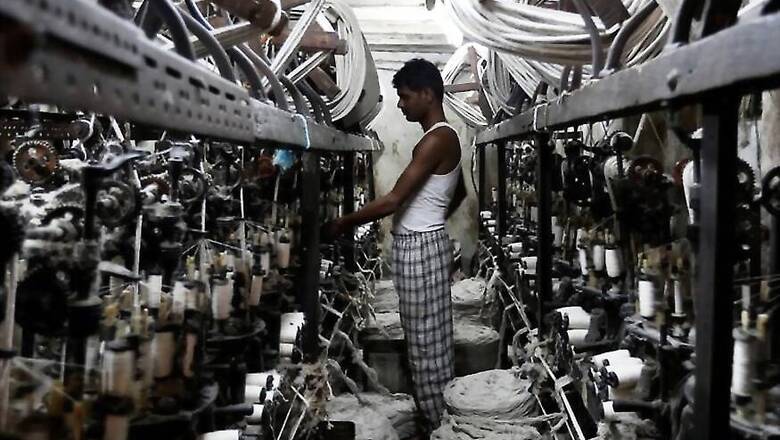
views
With the government's Rs 20 lakh crore stimulus package, the country's fiscal deficit is likely to be more than double to 7.9 per cent in the current financial year, according to an SBI research report.
The report had earlier estimated the fiscal deficit to be 3.5 per cent of GDP this fiscal.
The government has announced a cumulative package of Rs 20 lakh crore, which is nearly 10 per cent of GDP to provide relief to various segments of the coronavirus-hit economy.
"After taking into account cash outflow of these measures as well as the previous and the recent excise duty hike and DA freeze (amounting to around 0.8 per cent of GDP), we now revise our baseline fiscal deficit (excluding extra budgetary resources (EBR)) to 7.9 per cent of the revised GDP in FY21 from 3.5 per cent earlier, owing to lower revenues and higher expenditure against the backdrop of COVID-19 pandemic," the SBI's research report Ecowrap. said.
Baseline fiscal deficit based on CSO's earlier estimates of GDP is around 7.1 per cent of GDP, it added.
"We estimate a 4.5 per cent direct impact on fiscal deficit purely because of revenue shortfall / automatic fiscal stabilizer and a 0.9 per cent indirect effect because of GDP change," the report said.
The government Rs 20 lakh crore package includes Rs 1.7 lakh crore of fiscal stimulus announced in the first phase, Rs 5.6 lakh crore stimulus provided through various monetary policy measures and Rs 5.94 lakh crore through the second phase, implying Rs 6.70 lakh crore package is still to be announced.
"The cumulative actual fiscal impact is only around Rs 1.14 lakh crores or 0.6 per cent of GDP," the report said.
The government has announced an additional borrowing of around Rs 4.2 lakh crore or 2.1 per cent of GDP.
The report further said with higher deficit, the issue of a sustainable debt limit arises. The government debt as a percentage of GDP has been on a rising trend since FY11.
In the last eight years, government debt has risen from 62 per cent in FY11 to 66 per cent in FY19. During the same time period interest rate (repo rate) has declined from as high as 8.5 per cent to as low as 6 per cent, the report said.
In FY20, the repo rate was reduced further to 4.4 per cent. "This raises two related questions: how much government debt can India sustain? Does the decline in nominal interest rates following the possible financial crisis originating due to COVID-19 mean that the government can safely borrow more?" it said.
It said there have been studies which show that if the difference between interest rate and nominal growth rate is negative then there is no level of debt which is unsustainable, that is the government can borrow easily.
Only if the differential becomes positive then the question about maximum sustainable debt exists.
"Thus, in India as we expect the ratio to become positive by end-FY21, we would have to look into the upper limit of debt which is sustainable. Against this background, it is imperative that we give growth a definite push," the report added.



















Comments
0 comment